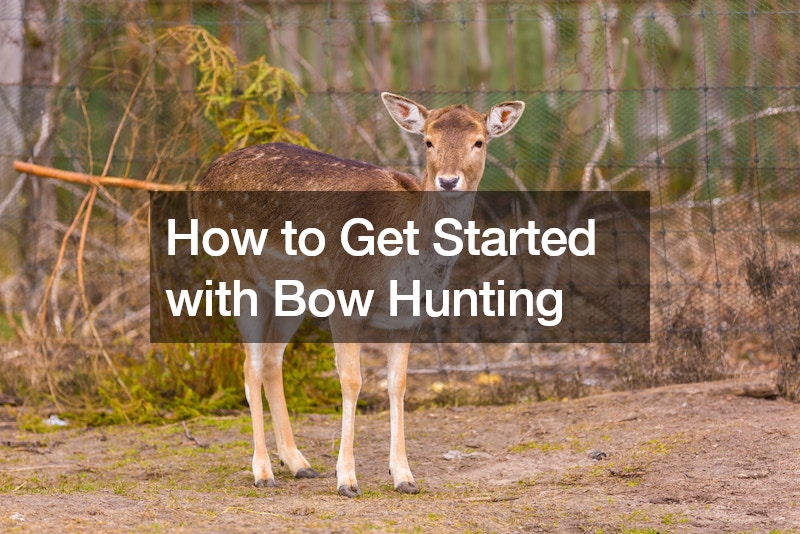
Bow hunting is a time-honored tradition that offers individuals a unique opportunity to connect with nature, test their skills, and experience the thrill of the hunt. Whether you’re a seasoned archer or a newcomer to the sport, getting started with bow hunting requires careful preparation and dedication. Here’s a detailed guide with actionable steps to help you begin your bow hunting journey:
Research and Understand Regulations
Visit your state’s wildlife agency website to access comprehensive information on hunting regulations, including seasons, bag limits, and licensing requirements.
Take note of specific rules and regulations pertaining to the species you intend to hunt, as well as any special permits or tags required for certain areas or game animals.
Consider attending local hunting seminars or workshops where seasoned hunters share insights and tips on navigating hunting regulations and ethics.
Attending local hunting seminars or workshops can provide invaluable guidance and insights into navigating hunting regulations and ethical practices. These events often feature experienced hunters, wildlife biologists, and conservationists who share their expertise and firsthand experiences with participants. Here are some specific examples of what you might expect from these seminars:
Regulatory Updates: Learn about recent changes to hunting regulations, including updates to seasons, bag limits, and hunting zones, directly from wildlife agency representatives or guest speakers.
Species-specific Workshops: Attend workshops focused on specific game species, such as deer, turkey, or waterfowl, to gain in-depth knowledge about their behavior, habitat preferences, and hunting techniques.
Ethics and Conservation: Explore the ethical considerations and conservation principles that guide responsible hunting practices. Topics may include fair chase, habitat conservation, and the ethical treatment of harvested game animals.
Hunting Tactics and Strategies: Discover effective hunting tactics, scouting techniques, and strategies for locating and harvesting game in various habitats and terrain types.
Firearm and Archery Safety: Receive instruction on firearm and archery safety protocols, including proper handling, storage, and shooting techniques, to ensure safe and responsible hunting practices.
Legal Considerations: Gain a better understanding of the legal aspects of hunting, including landowner rights, trespassing laws, and liability issues, to avoid potential conflicts and legal repercussions.
Equip Yourself Properly:
Consult with knowledgeable staff at a reputable archery shop to select the right bow for your skill level, budget, and hunting preferences. Test different bows to find one that feels comfortable and suits your shooting style.
Invest in high-quality arrows for bow hunting, ensuring they are properly spined and matched to your bow’s draw weight and length. Consider factors such as arrow material, weight, and broadhead compatibility.
Explore additional hunting gear and accessories such as broadheads, bow sights, arrow rests, and quivers, selecting items that enhance your shooting accuracy and hunting effectiveness.
Seek Education and Training:
Enroll in a certified bow hunter education course offered by your state’s wildlife agency or accredited organizations. These courses cover essential topics such as hunting safety, wildlife identification, shot placement, and ethical hunting practices.
Attend archery lessons or workshops conducted by certified instructors to improve your shooting technique, stance, and bow handling skills. Practice shooting from various distances and positions to build confidence and consistency.
Scout Potential Hunting Locations
Use online mapping tools and satellite imagery to identify promising hunting areas near your location, including public lands, wildlife management areas, and private properties with hunting access.
Visit potential hunting locations in person to assess the terrain, vegetation, water sources, and wildlife activity. Look for signs of game such as tracks, droppings, rubs, and bedding areas.
Establish trail cameras in strategic locations to monitor wildlife movement patterns and gather valuable reconnaissance data before the hunting season begins.
Practice Archery Skills
Set up a backyard archery range or visit a local archery club to practice shooting your bow regularly. Focus on refining your shooting form, aiming technique, and release execution.
Experiment with different shooting positions, including standing, kneeling, and sitting, to simulate real-world hunting scenarios.
Practice shooting from elevated platforms and shooting lanes to prepare for hunting from tree stands or ground blinds.
Fine-tune your equipment setup, including bow draw weight, arrow spine, and sight calibration, to achieve optimal accuracy and consistency on the range and in the field.
Prepare for the Hunt
Compile a comprehensive hunting gear checklist, including clothing, footwear, scent control products, navigation tools, first aid supplies, and emergency communication devices.
Plan your hunting strategy based on seasonal patterns, weather conditions, and game behavior. Identify potential ambush sites, travel corridors, and feeding areas where you can intercept game during the hunting season.
Conduct pre-season scouting trips to confirm wildlife movement patterns and identify promising hunting locations. Practice setting up tree stands or ground blinds and familiarize yourself with the surrounding terrain to minimize disturbance during hunts.
By following these actionable steps and immersing yourself in the world of bow hunting, you’ll build the skills, knowledge, and confidence needed to pursue your passion for hunting responsibly and ethically. Remember to prioritize safety, respect for wildlife, and conservation stewardship in all your hunting endeavors, ensuring a rewarding and sustainable hunting experience for generations to come.
.




